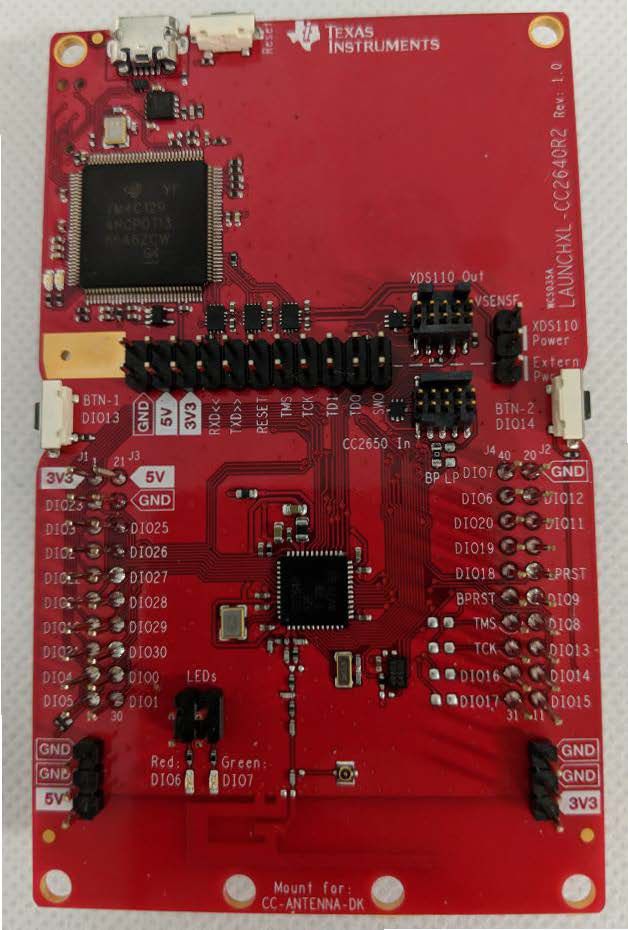TIDUE59A May 2018 – September 2020
- Description
- Resources
- Features
- Applications
- 1System Description
-
2System Overview
- 2.1 Block Diagram
- 2.2 Design Considerations
- 2.3 Highlighted Products
- 2.4 System Design Theory
- 3Hardware, Software, Testing Requirements, and Test Results
- 4Design Files
- 5Software Files
- 6Related Documentation
- 7Terminology
- 8About the Author
- 9Revision History
3.1.1.2 CC2640R2F LaunchPad™ Development Kit
All jumpers must be removed from the CC2640R2F LaunchPad kit before connecting it to the CC3220S LaunchPad kit to run the demo. However, the steps for programming the LAUNCHXL-CC2640R2 described in Section 3.1.2 must be completed before removing all jumpers and assembling the hardware. Figure 3-2 shows the LAUNCHXL-CC2640R2 when programmed.
 Figure 3-2 CC2640R2F LaunchPad Kit Configuration
Figure 3-2 CC2640R2F LaunchPad Kit ConfigurationThe default pin mapping of the SNP images for the CC2640R2F, provided in the BLE plugin, lead to pin conflicts with the CC3220S LaunchPad kit and the sensor BoosterPack plugin module. To allow all three EVMs to be connected together with minimal hardware modifications, the user must rebuild the SNP application (simple_np) from the SimpleLink CC2640R2F SDK, with an updated pin mapping before programming the board. The process for updating the pin mapping of the CC2640R2F is described in Section 3.1.2, but it results in the following connections between the CC3220S and the CC2640R2F (see Table 3-1).
| CC3220S | CC2640R2F |
|---|---|
| Pin 3 (UART0 TX) | DIO 2 (UART RX) |
| Pin 4 (UART0 RX) | DIO 3 (UART TX) |
| Pin 62 (MRDY) | DIO 21 (MRDY) |
| Pin 8 (SRDY) | DIO 11 (SRDY) |
| Pin 7 (RESET) | BPRST (RESET) |
All of the pins listed in Table 3-1 are connected when stacking the LaunchPads to assemble the demo, except for the RESET line. A single, 2-pin jumper can be used to connect Pin 7 of the CC3220S to the BPRST pin of the CC2640R2F when the LaunchPad kits and BoosterPack module are stacked, as described in Section 3.1.1.5.